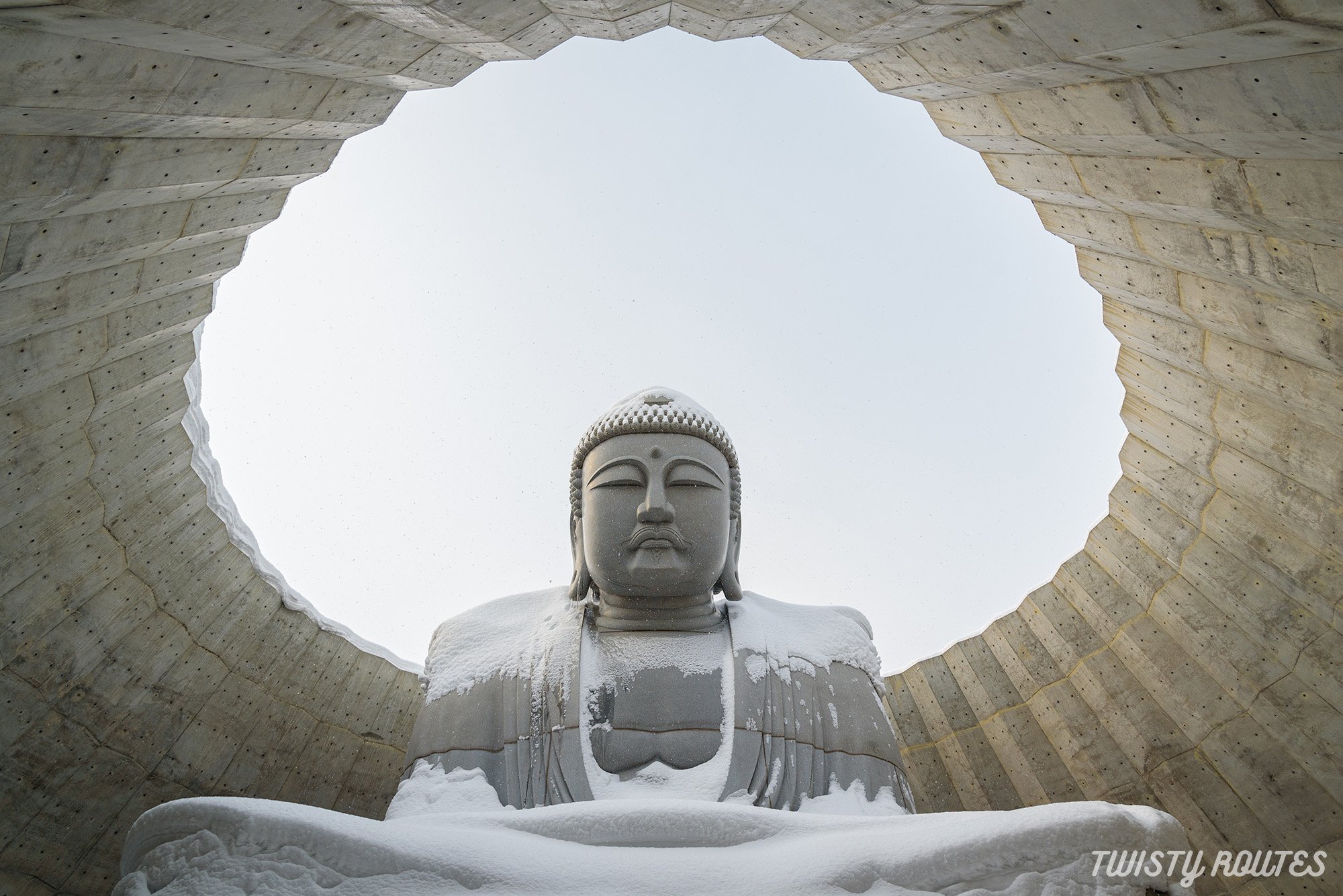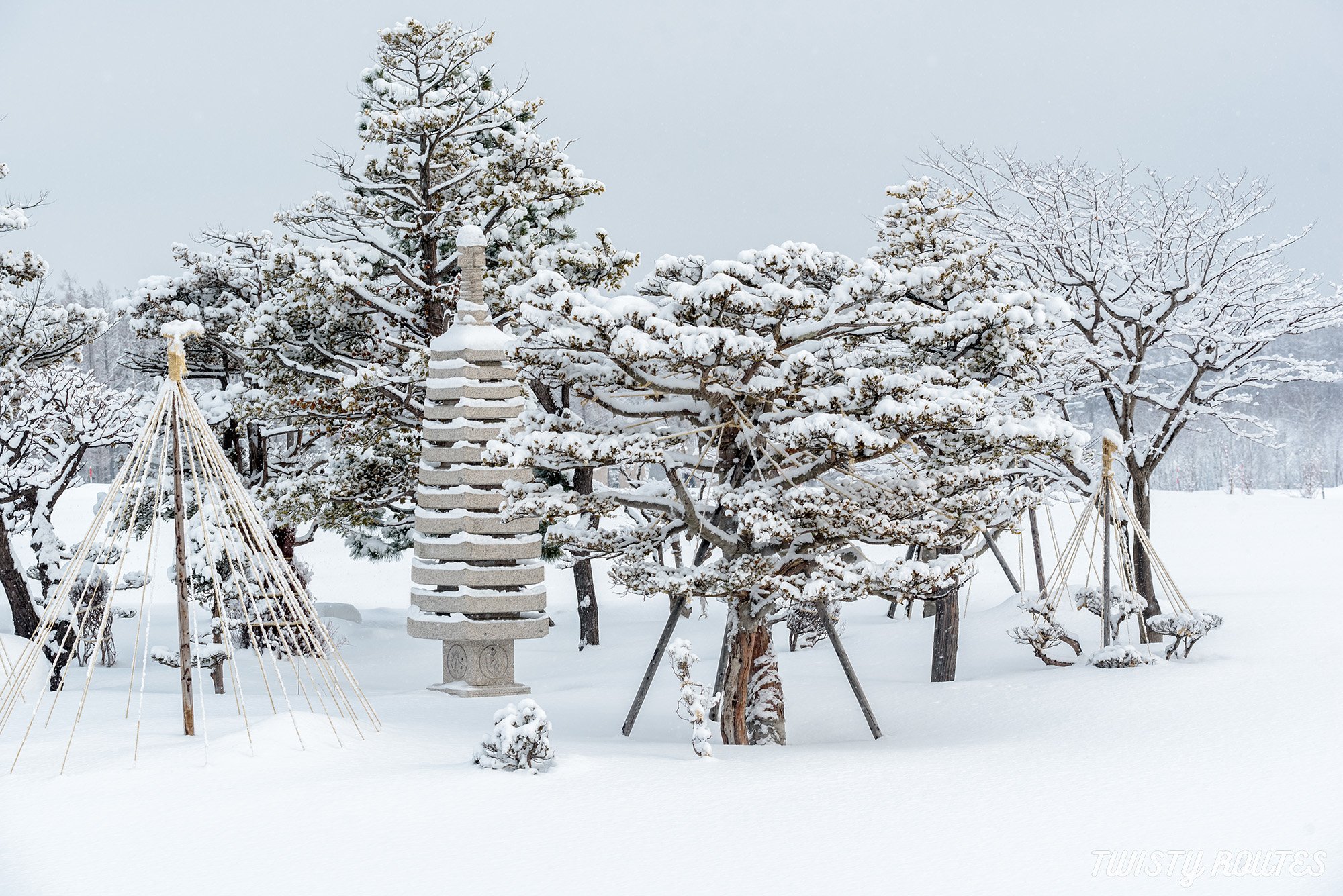The Hill of the Buddha
When visiting a country as beautiful and so popular with tourists such as Japan it is often difficult to find places that are not already swarming with visitors. As such, the true essence of a place is often lost when you are sharing it with crowds of people each clamoring for that elusive selfie.
Well, we’re happy to report that we came across one such place on our last visit to Japan.
The Hill of the Buddha (頭大仏) is a Buddhist shrine at Makomanai Takino Cemetery in the outskirts of Sapporo on Japan’s northern island of Hokkaido.
Designed by architect Tadao Ando, the stunning shrine opened in December 2015.
The sculpted stone Buddha statue called Atama Daibutsu, is encircled by a rotunda situated on a gently sloping artificial hill within the land belonging to the cemetery. It is 13.5-metre tall and weighs 1500 tonnes. When approaching it from afar, the lone head of the Buddha peeking from within the rotunda conveys a solemn, serene impression of the Buddha.
The Buddha statue covered in fresh snow on a winter’s day in Sapporo
Getting There
From Sapporo Subway station (N06) take the Namboku line bound for Makomanai and get off at the terminal at Makomanai (N16)
Outside Makomanai station take the Chuo bus no. 106 or Chuo bus no. 108 to get to Takino Cemetery from where it is a short walk to the Buddha. The bus ride costs 380 Yen
Admission
Opening Hours
April-October 9: 00-16: 00
November-March 10: 00-15: 00
Open all year round
Phone 011-592-1223
Official Website takinoreien.com
Admission Fees A 300-yen donation is requested per person.
We left our hotel in downtown Sapporo to be greeted by scenes like this, not quite the crisp, sunny morning we wanted but rather a snowy, windy day which made it seem even colder than it actually was. Nevertheless, a quick bite (Yummy egg sandwiches and veggie Onigiri) and a hot cup of coffee from the nearest convenience store gave us the energy to make the trip.


For people like us who’ve lived all our lives in places where it doesn’t snow normally, it’s quite a sight to see such large swathes of snow but after the first 10 minutes of taking pictures and enjoying the snow is when reality hits in. Snow starts covering you everywhere! It’s a constant struggle between keeping yourself dry and also protecting your photo gear from the elements. A thick, waterproof jacket with a hood and good walking boots with GRIP is a must here.
We soon reached Sapporo subway station and took the train bound for Makomanai on the Namboku line. This particular entrance of Sapporo station was quite different and from afar looked more like the entrance to a mini-chapel rather than a subway station!


After reaching Makomanai station, we followed the signs to the bus terminal and took the bus to the Buddha (no. 106) from bus Stop no 2.



When entering the cemetery, you are greeted by the somewhat strange sight of giant Moai statues similar to those seen on Easter Island.
Not quite sure what is the reason for these statues to be installed here but I guess this is probably something related to honoring and deifying the ancestors as was the case with the original statues on Easter Island.
Equally strange was the presence of a replica of Stonehenge! I guess the idea of Stonhenge possibly being a burial ground has something to do with this replica created inside a Japanese cemetery.


The entrance to the Buddha has a water garden that visitors normally walk around. However, in winter this was covered in snow and a small path cleared in the middle for people to walk. After this, you walk through an arched concrete tunnel at the end of which sits the Buddha statue, at the center of an open rotunda allowing sunlight to come in.
The circular opening of the rotunda with light streaming in almost gives a “halo” like feel to the Buddha statue.




Once you are done enjoying the snow and taking pictures, make a stop at Rotunda Café and Store which is located inside the Hill of the Buddha for some snacks and coffee. The gift shop also offers a variety of themed souvenirs here to take back as memories.
Although we visited in winter, we’d definitely like to make a return in summer. The hill is planted with 150,000 lavenders that turn fresh green in spring & purple in summer lending it a completely different and serene look. Check out this link to see some pictures showing what the scene looks like in spring/summer.
References & useful links
Official website -Visitors’ guide with the up-to-date bus schedule and interesting information about the design of the Buddha hill. Use google translate for English.
An architectural appreciation of the Hill of the Buddha
Photo Gallery






